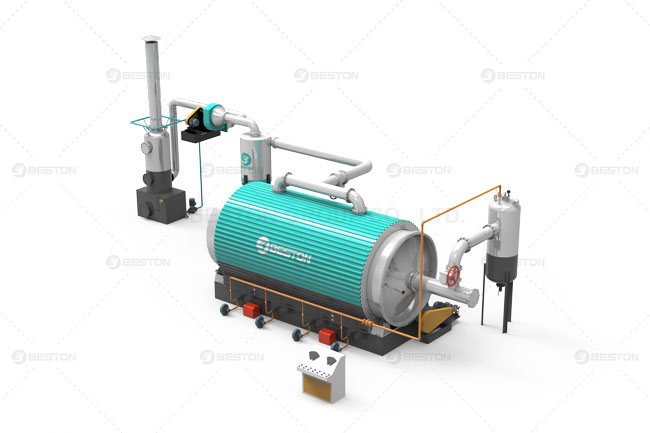Amidst the growing concerns of climate change and the urgent need to mitigate greenhouse gas (GHG) emissions, innovative technologies are emerging as powerful allies in the battle against global warming. One such technology that holds immense potential is biochar equipment. By converting organic waste into a highly stable carbon-rich product called biochar, this equipment offers a sustainable solution for reducing GHG emissions and promoting environmental stewardship. Let’s explore how biochar equipment contributes to the fight against climate change.

Benefits of Greenhouse Gas Reduction and Sustainable Development
Carbon Sequestration: Biochar equipment plays a pivotal role in carbon sequestration. It converts biomass, such as agricultural residues, forestry waste, or purpose-grown plants, into biochar through a process called pyrolysis. Biochar, when applied to soil, acts as a long-term carbon sink, locking away carbon dioxide (CO2) for hundreds or even thousands of years. This sequestration mechanism effectively reduces the net release of CO2 into the atmosphere, mitigating its impact on global warming.
Soil Health Improvement: Apart from its carbon sequestration benefits, biochar significantly enhances soil health. When integrated into agricultural soils, biochar improves water retention, nutrient availability, and microbial activity, fostering healthier plant growth and increased crop yields. These improvements reduce the need for synthetic fertilizers and pesticides, thereby decreasing the associated GHG emissions from their production and use.
Methane and Nitrous Oxide Reduction: Coconut charcoal making machine indirectly leads to a reduction in potent GHGs like methane (CH4) and nitrous oxide (N2O). By enhancing soil conditions and reducing nutrient leaching, biochar promotes a more efficient uptake of nitrogen by plants. This results in decreased emissions of N2O, a potent greenhouse gas with a warming potential significantly higher than CO2. Furthermore, biochar-amended soils have been shown to reduce methane emissions from flooded rice paddies, another substantial contributor to global GHG emissions.
Waste Diversion and Energy Generation: Biochar equipment contributes to waste management by converting biomass and organic waste streams into valuable biochar. Instead of incinerating or decomposing these materials, which release GHGs, biochar production harnesses their carbon content while simultaneously generating renewable energy through pyrolysis processes. This dual benefit reduces reliance on fossil fuels for energy generation and curtails the release of GHGs associated with traditional waste disposal methods.
Renewable Energy Co-benefit: The pyrolysis process used in biochar equipment not only produces biochar but also generates syngas, a mixture of hydrogen, carbon monoxide, methane, and other combustible gases. This syngas can be captured and utilized as a renewable energy source, reducing reliance on fossil fuels and decreasing GHG emissions associated with traditional energy production.
Sustainable Agriculture Practices: Biochar equipment promotes sustainable agricultural practices by improving soil fertility and reducing the need for synthetic fertilizers. By incorporating biochar into farming systems, farmers can enhance nutrient cycling, reduce water and nutrient runoff, and minimize soil erosion. These practices not only mitigate GHG emissions but also support long-term soil health and resilience.
Waste Valorization and Circular Economy: Palm kernel shell charcoal making machine enables the conversion of various organic waste materials into a valuable resource. Agricultural residues, forestry byproducts, and even certain types of municipal solid waste can be transformed into biochar, diverting them from landfills or incineration facilities. By embracing a circular economy approach, biochar equipment helps close the waste loop and reduces the release of GHGs associated with waste decomposition.
Potential Carbon Offsetting Mechanism: The permanent sequestration of carbon in biochar makes it a potential tool for carbon offsetting. Biochar’s stability ensures that the captured carbon remains locked away for long periods, effectively compensating for carbon emissions elsewhere. This opens up possibilities for developing carbon markets and incentivizing the adoption of biochar equipment as a means of GHG mitigation.
Conclusion
Biochar equipment emerges as a promising technology that aids in the reduction of greenhouse gases while fostering sustainable development. Through carbon sequestration, soil health improvement, and mitigation of methane and nitrous oxide emissions, it offers an effective tool to combat climate change. Moreover, by diverting organic waste from landfills and contributing to renewable energy production, biochar equipment promotes a circular economy and aligns with the principles of environmental stewardship. As we continue to explore innovative solutions, harnessing biochar equipment could pave the way towards a greener and more sustainable future.